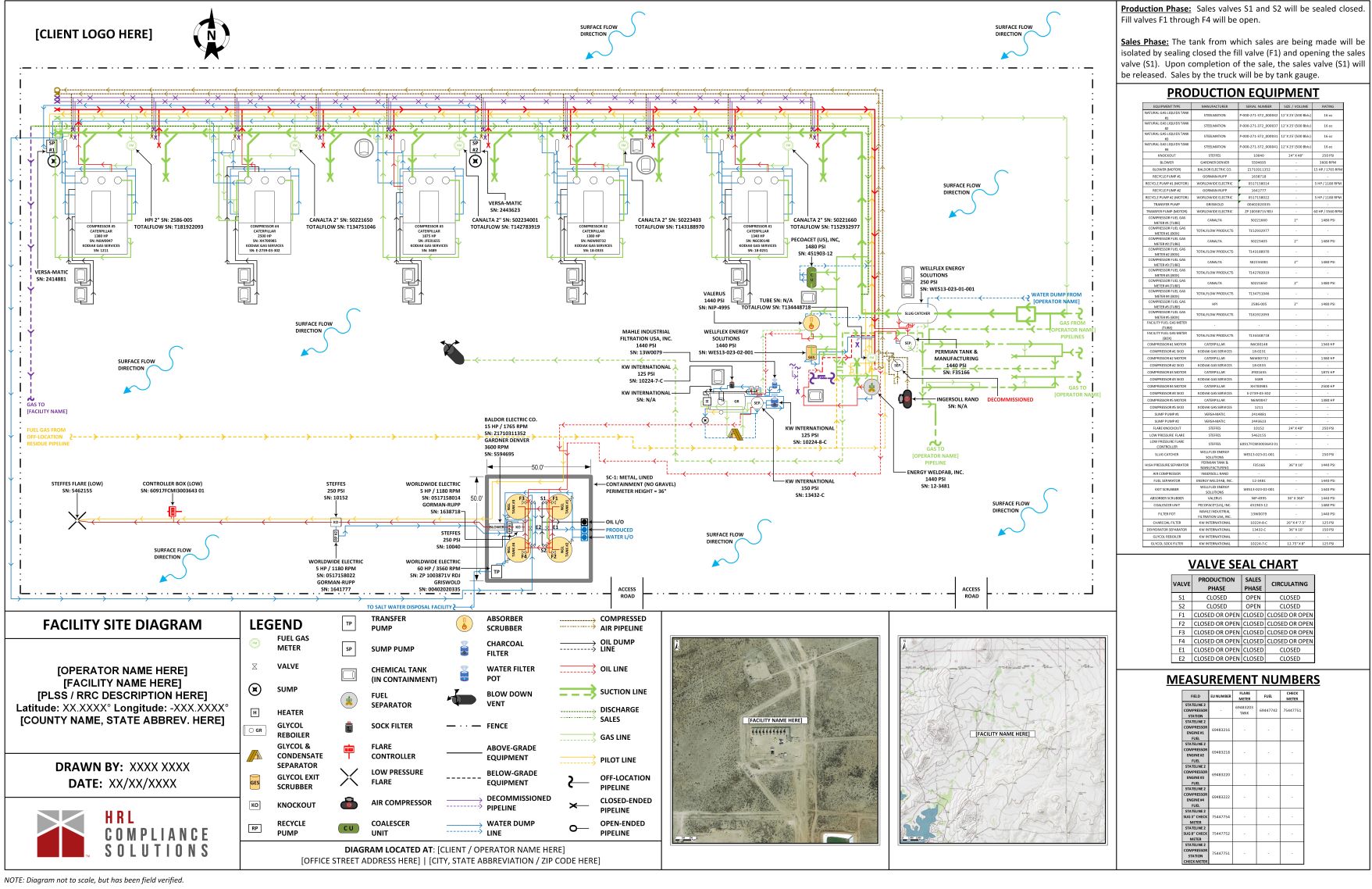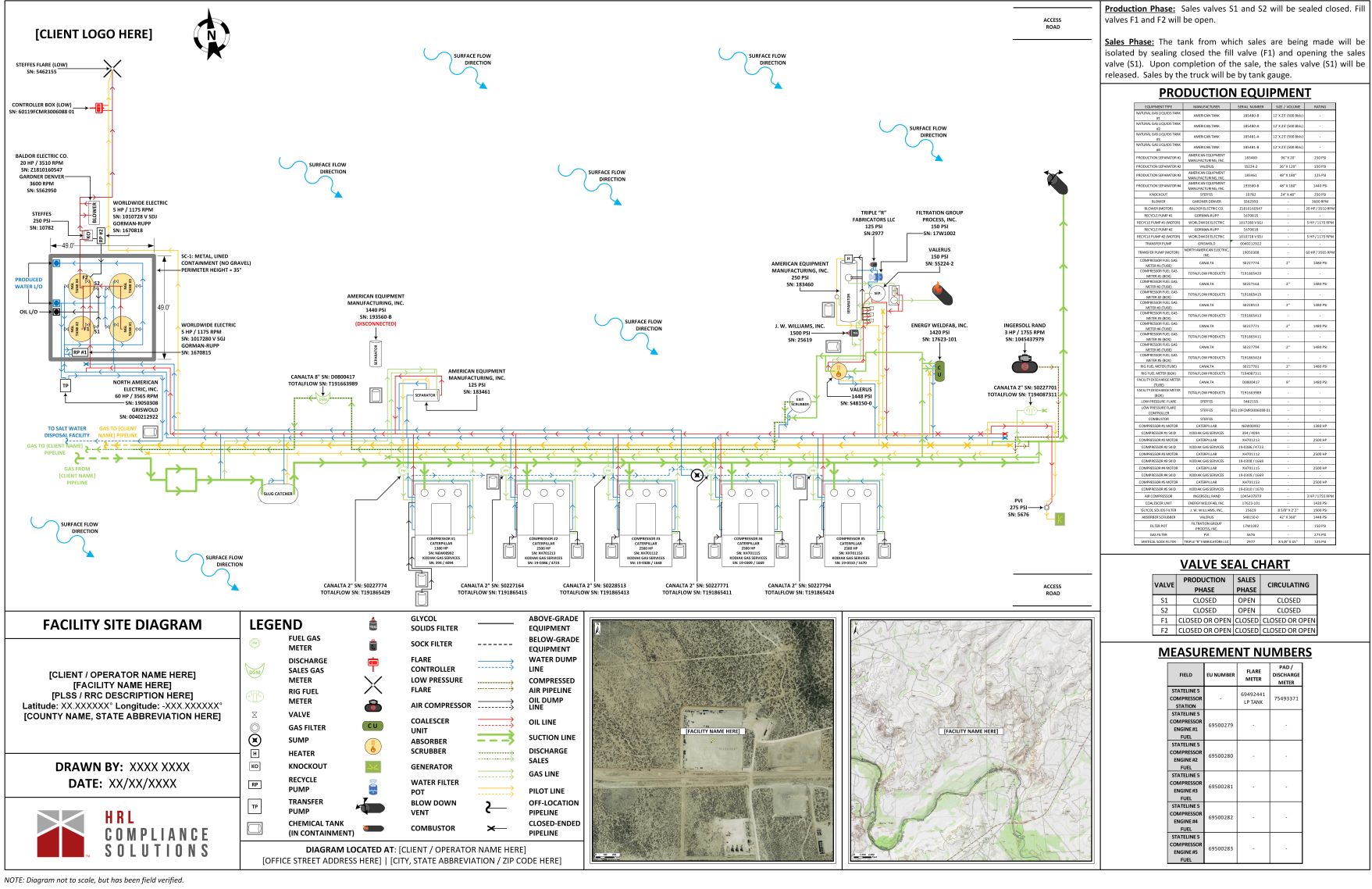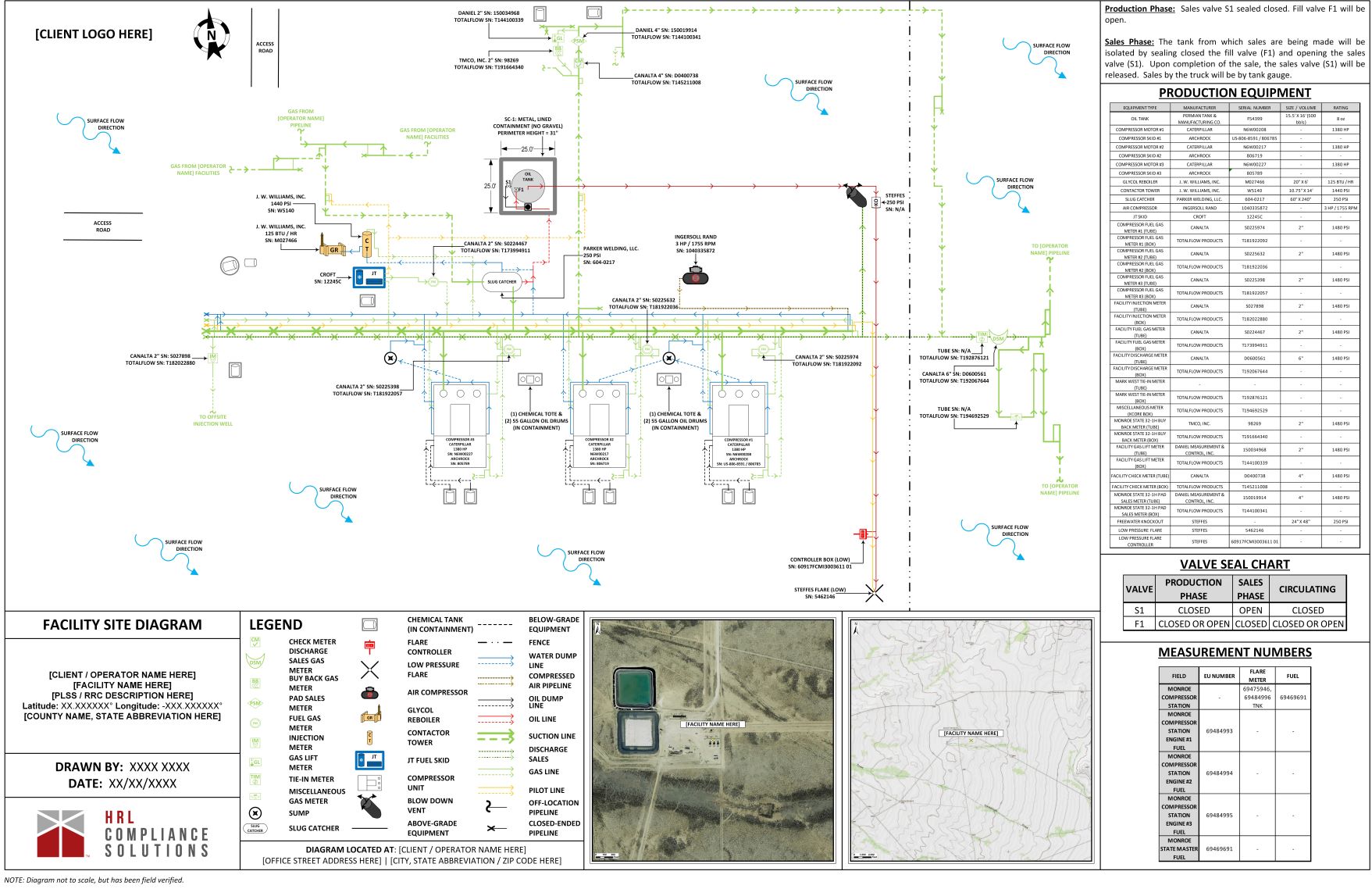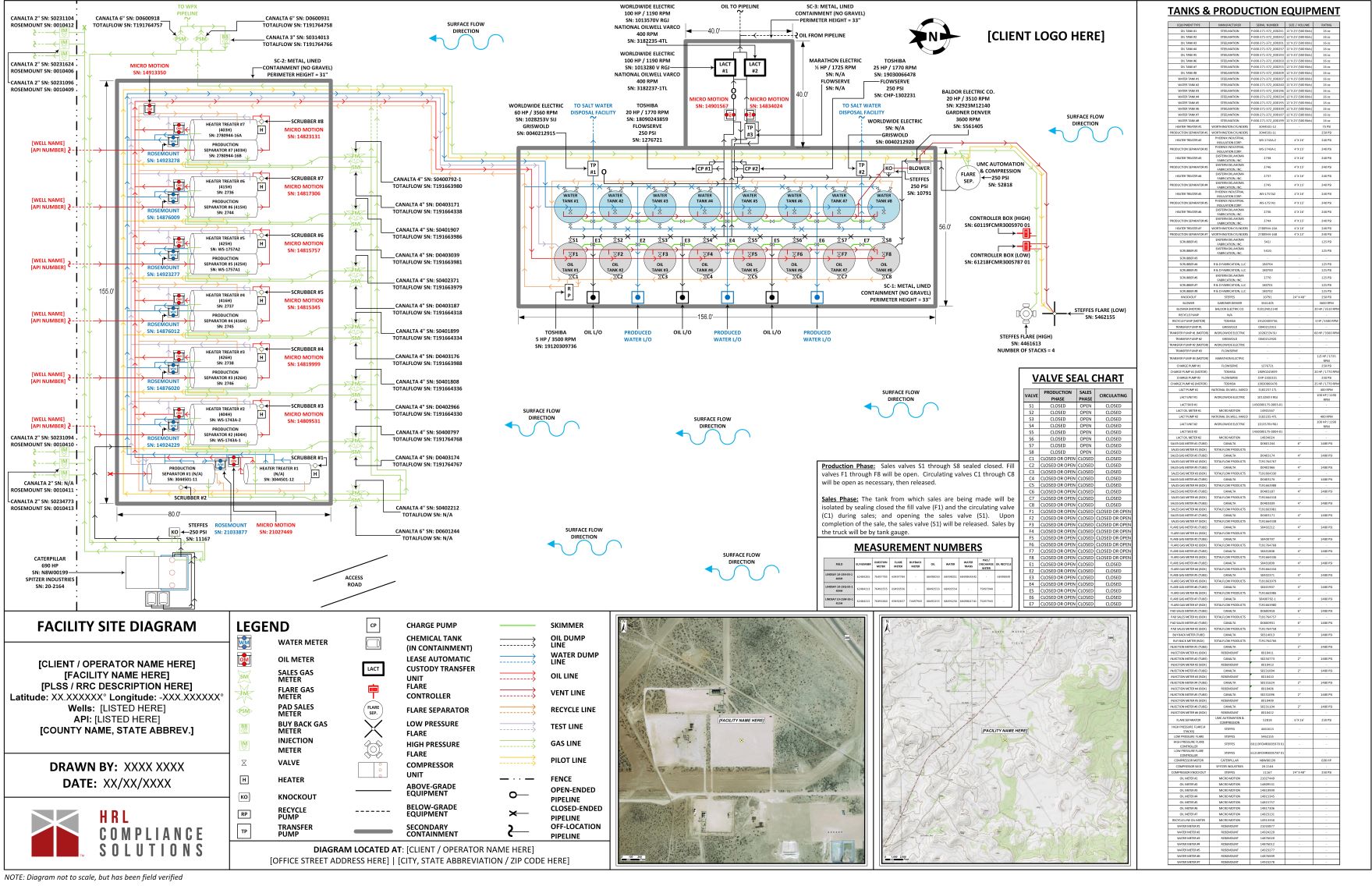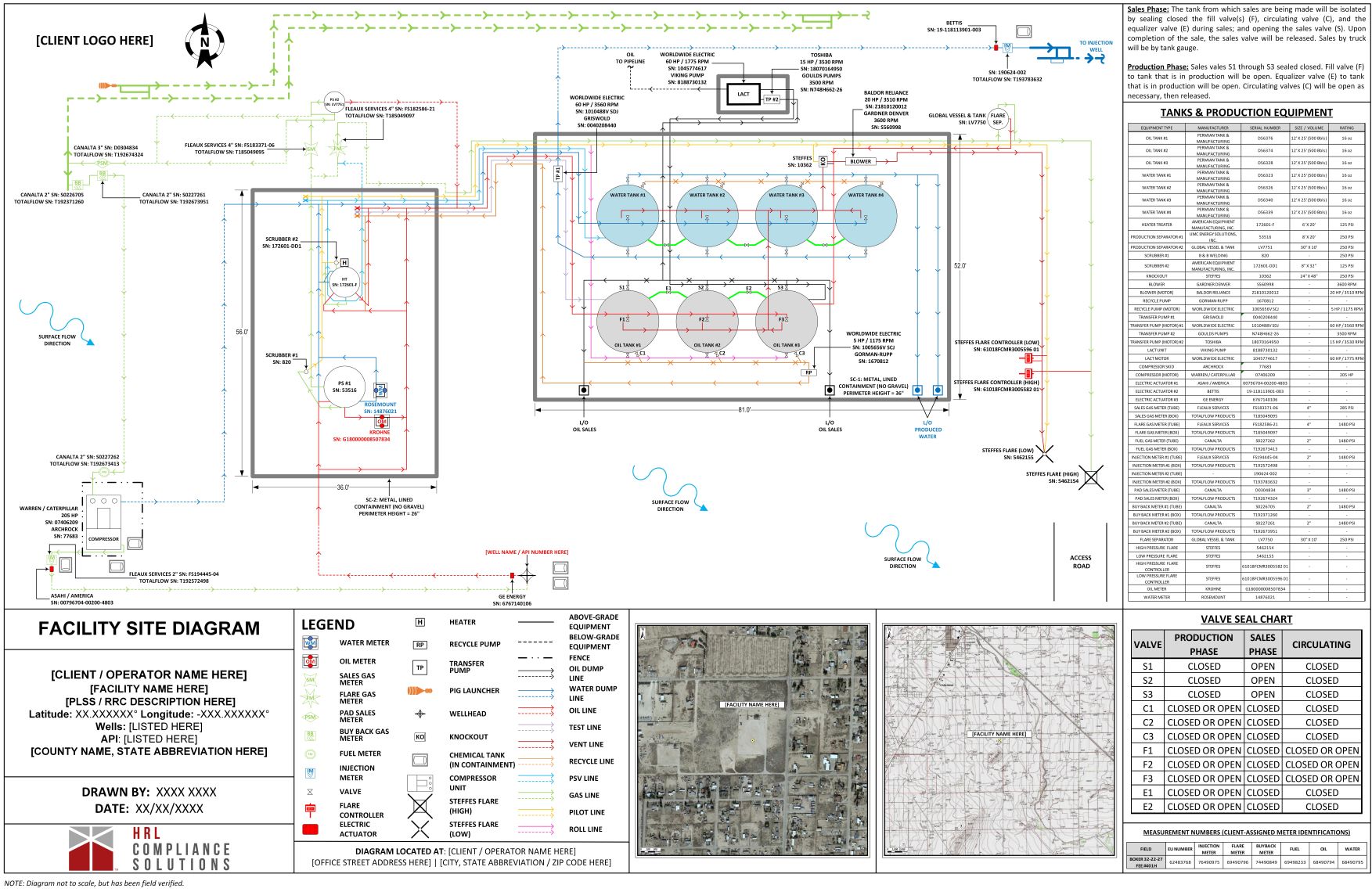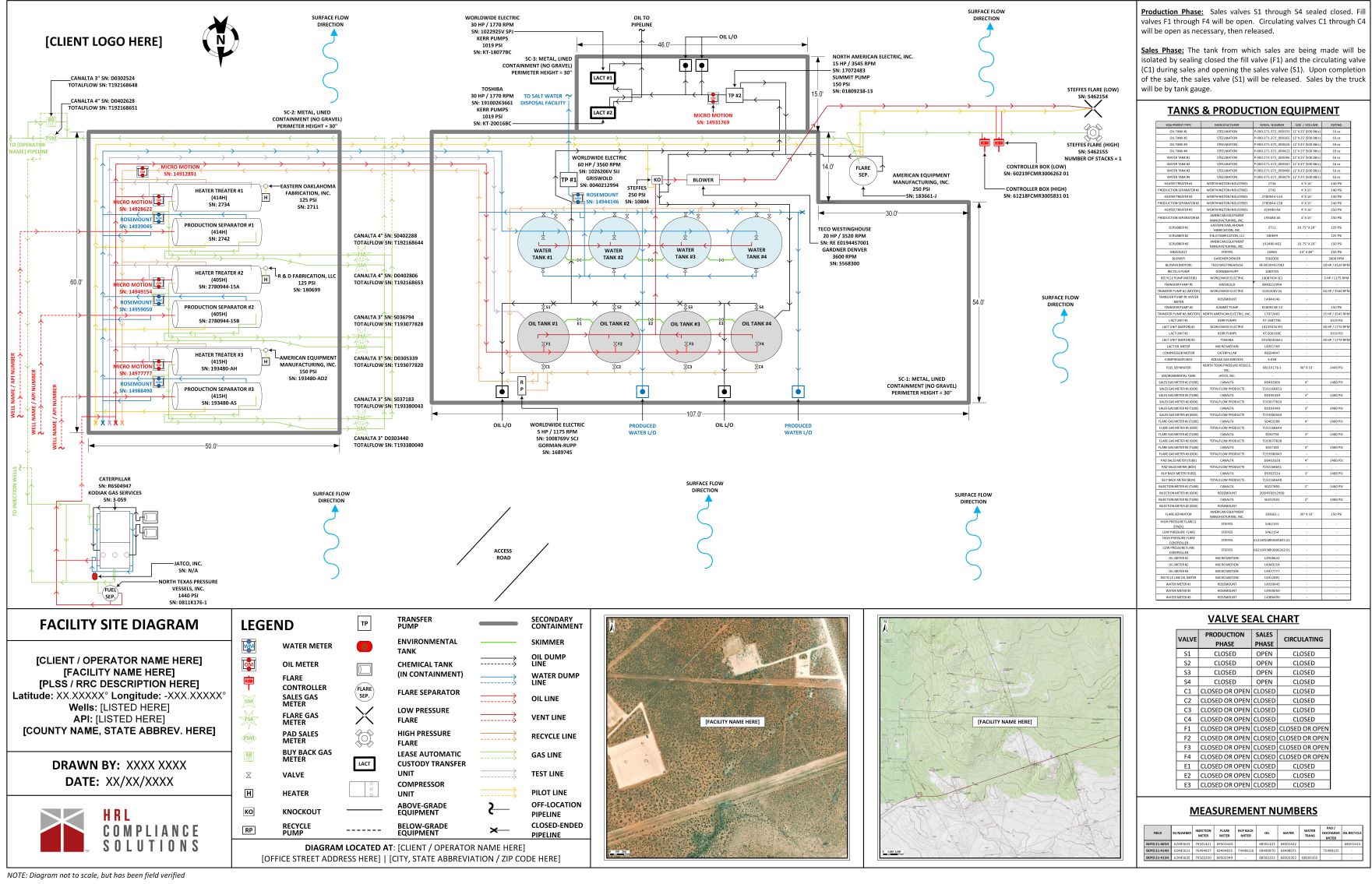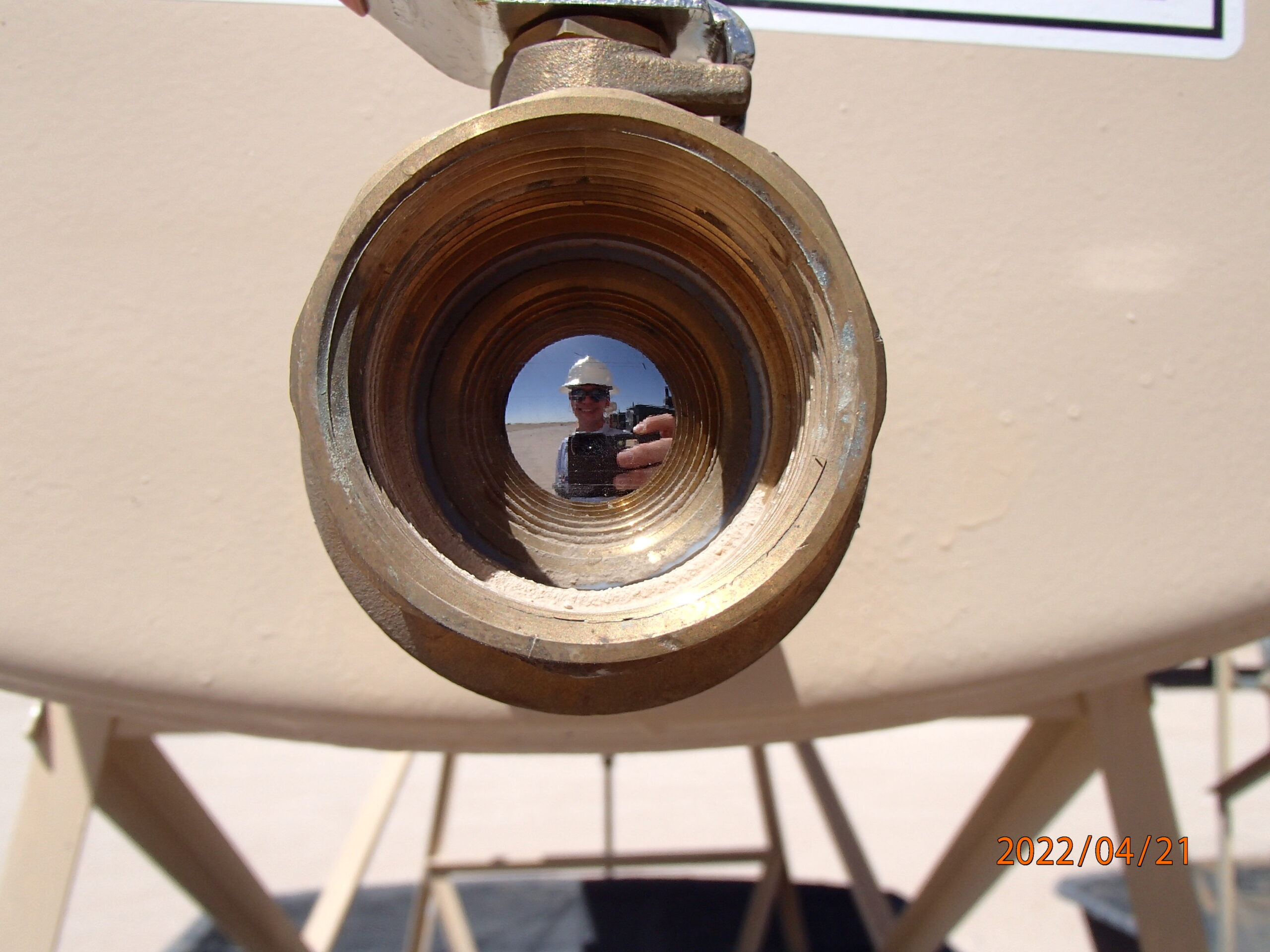PROGRAM DEVELOPMENT AND OVERSIGHT
Rule 30 CFR Part 250 was made effective by the U.S. Bureau of Safety and Environmental Enforcement (BSEE) in 2016 to help reduce the number of production incidents resulting in oil spills, injuries, and fatalities. Operators may not begin oil and gas production until the BSEE approves their production safety system application and conducts a pre-production inspection. This rule covers a variety of facilities, ranging from small single-well production facilities to large compressor stations and gas plants. HRL is specialized in providing facility diagrams that satisfy the requirements of the PSSR. Our services include:
SITE INSPECTIONS
HRL has completed hundreds of PSSR inspections. All containment and storage vessel dimensions are carefully measured. The serial numbers, manufacturer name, sizes / volumes, and ratings of all equipment are logged. Detailed photographs of the entire facility are taken, including the specification tags on all equipment. Surface water flow directions are mapped along with other facility landmarks (i.e., evaporation ponds, facility control buildings, access roads, etc.). The relative positions of all equipment and pipelines are mapped, including a breakdown of pipeline types (natural gas, water, oil, fuel gas, compressed air, etc.). Facilities that HRL staff have inspected include:
- Well Production Facilities / Tank Batteries
- Compressor Stations
- Saltwater Disposal Facilities
PSSR DIAGRAMS / EQUIPMENT INVENTORIES
HRL has created many PSSR diagrams since the establishment of the Rule. Our schematics depict the relative positioning of all equipment and pipelines on location. The flow direction of each pipeline is indicated by arrowheads. Each piece of equipment is labeled with the manufacturer’s name, rating, and serial number. Per the Rule, a table is also shown that explains the positions of the oil storage tank valves for each phase of operations. A full equipment inventory spreadsheet is included with the diagram, enabling the operator to track the ratings and limits of all equipment on location more efficiently. Aerial and topographical maps are incorporated into the diagram to help the viewer better understand the local setting and conditions of the facility. While these schematics are generally not scaled engineering diagrams, their high level of detail and clarity do satisfy the conditions listed by the Rule. Additionally, the symbology and colors used are selected specifically to allow for more user-friendly viewing for a wider variety of audiences, including engineers, construction crews, safety personnel, and agency inspectors.
From the field inspections through the drafting of the final PSSR diagram, HRL’s professional staff takes pride in our commitment to capturing and depicting even the most subtle of details and ensuring that our clients are complying with all applicable regulations.
